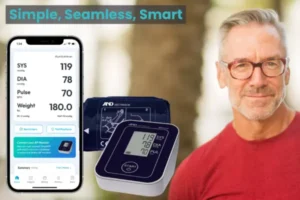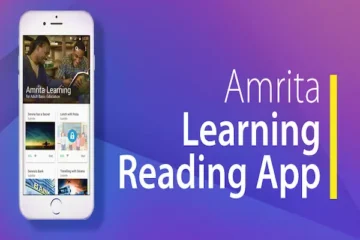How a blood pressure monitor app works
Discover how a blood pressure monitor app works, helping you track and manage hypertension with real-time data, AI insights, and smart integrations.
Advertising
These apps provide valuable insights and reminders that help users maintain their health effectively.
They also serve as a cost-effective alternative to frequent visits to medical professionals, allowing users to keep track of their blood pressure trends over time.
[related]
How a Blood Pressure Monitor App Works
A blood pressure monitor app works by syncing with digital blood pressure devices or utilizing manual input methods.
Some apps also use photo plethysmography (PPG) sensors in smartphones to estimate blood pressure levels.
These apps store data over time, providing insights into blood pressure fluctuations.
Many integrate with health platforms like Google Fit and Apple Health, allowing seamless tracking.
By collecting historical data, users can identify patterns, triggers, and lifestyle factors that may be affecting their blood pressure, helping them make more informed health decisions.
Advanced apps also include AI-powered analysis tools that predict potential risks based on historical readings, ensuring proactive management of cardiovascular health.
Key Functionality
- Data Logging – Users manually enter or sync data from smart monitors, ensuring that every reading is accurately recorded and easily accessible.
- Trend Analysis – Apps provide graphs and insights into fluctuations over time, enabling users to recognize patterns and adjust their habits accordingly.
- Reminders & Alerts – Helps users maintain consistent tracking by sending notifications for scheduled readings, medication reminders, and lifestyle adjustments.
- Health Reports – Generates summaries for sharing with doctors, allowing for remote consultations and better-informed medical decisions.
- Multi-Device Synchronization – Users can connect their app to multiple devices such as smartwatches, tablets, and home blood pressure monitors for a holistic tracking experience.
- Lifestyle Recommendations – Some apps provide tailored diet, exercise, and hydration suggestions based on recorded blood pressure levels.

How Technology Helps Control Blood Pressure
Technology has revolutionized blood pressure management with smart devices, mobile apps, and telemedicine.
Smart monitors and wearable devices provide real-time tracking, reducing the need for frequent doctor visits.
These innovations help users monitor trends, receive alerts for irregular readings, and integrate with health platforms for seamless data management.
Blood pressure monitoring apps offer automated tracking, AI-powered insights, and medication reminders.
Combined with wearable technology like smartwatches, these tools promote proactive health management by encouraging physical activity and maintaining healthy habits.
Telemedicine further enhances accessibility, allowing remote consultations and personalized treatment plans without visiting a clinic.
Lifestyle-focused tools such as fitness trackers and diet apps complement blood pressure management by promoting healthier choices.
By leveraging AI-driven analysis and integrating with medical platforms, these solutions provide a comprehensive approach to cardiovascular health.
As technology advances, these tools will continue making healthcare more efficient and accessible for everyone.
Benefits of a Blood Pressure Monitor App
A blood pressure monitor app provides various advantages that help users stay informed about their heart health.
The convenience of digital tracking reduces the risk of misplacing manual records while ensuring accurate and reliable data storage.
1. Convenience & Accessibility
Tracking blood pressure becomes effortless, eliminating the need for manual records. Users can take readings anytime, anywhere, reducing dependency on medical visits for basic monitoring.
2. Smart Health Insights
Users receive personalized reports and insights for improved blood pressure management. With AI-generated predictions and real-time tracking, individuals can make necessary adjustments to their lifestyle before health issues arise.
3. Integration with Wearable Devices
Apps sync with smartwatches, fitness trackers, and medical-grade BP monitors for accurate readings. This allows for real-time updates, ensuring that blood pressure levels are monitored consistently without extra effort.
4. Emergency Alerts
Some apps come with built-in alert systems that notify users or emergency contacts when abnormal blood pressure levels are detected, ensuring timely intervention.
5. Data Sharing with Healthcare Providers
Users can easily export and share their blood pressure reports with doctors, enabling better diagnosis and treatment planning.
Medical Monitoring Combined with the Blood Pressure Monitor
Medical monitoring has become an essential aspect of modern healthcare, helping individuals manage chronic conditions effectively.
When combined with a blood pressure monitor, it provides real-time health insights, early detection of risks, and personalized medical recommendations.
This integration enhances patient care and promotes proactive health management.
High blood pressure, or hypertension, is a silent condition that can lead to severe cardiovascular diseases if left unmanaged.
Medical monitoring, when paired with blood pressure tracking, allows healthcare professionals to assess patient health continuously and make necessary interventions before complications arise.
Key Benefits:
- Early Detection of Health Issues: Continuous monitoring helps identify blood pressure trends that may indicate potential health risks.
- Personalized Treatment Plans: Real-time data allows doctors to adjust medications and lifestyle recommendations accordingly.
- Enhanced Patient Compliance: Automated reminders for blood pressure readings and medication intake improve adherence to treatment plans.
Integration of Blood Pressure Monitors with Medical Monitoring Systems
With the advancement of digital health, blood pressure monitors can now sync with medical monitoring systems, providing seamless data transfer between patients and healthcare providers. This connectivity is achieved through:
- Wearable Technology: Smartwatches and fitness trackers with built-in blood pressure monitors ensure real-time health tracking.
- Mobile Health Applications: Apps store and analyze blood pressure data, allowing users to track trends and receive personalized health insights.
- Remote Patient Monitoring (RPM) Platforms: Healthcare providers can access patient data remotely, enabling virtual consultations and timely interventions.
How Medical Monitoring Improves Hypertension Control
1. Data-Driven Health Decisions: Medical monitoring provides continuous blood pressure readings that help doctors and patients make informed decisions about treatment strategies.
2. Remote Monitoring & Telemedicine: Patients with hypertension benefit from remote consultations, where doctors review their blood pressure trends and adjust treatments without requiring in-person visits.
3. Alerts & Emergency Notifications: Advanced systems send automatic alerts to patients and caregivers when blood pressure readings fall outside normal ranges, ensuring quick medical response.
Future of Medical Monitoring in Blood Pressure Management
The integration of AI-powered analytics, machine learning, and predictive modeling in medical monitoring is set to revolutionize how blood pressure and overall health are managed.
What to Expect in the Future:
- More Accurate Blood Pressure Sensors: Enhanced accuracy in wearable technology for real-time monitoring.
- AI-Powered Risk Analysis: Predictive modeling to assess the likelihood of hypertension-related complications.
- Expanded Remote Monitoring Programs: Increased accessibility to blood pressure management through telehealth services.
Where to Find a Blood Pressure Monitor App
Most blood pressure monitor apps are available on Google Play Store (Android) and Apple App Store (iOS).
Some premium versions offer advanced health analytics, AI-driven suggestions, and professional consultation options.
For the best experience, it’s advisable to choose apps that are certified by medical institutions or have been approved by healthcare professionals.
How to Choose the Best Blood Pressure Monitor App
Selecting the right app depends on factors such as:
- Device Compatibility – Ensure the app works with your smartphone, smartwatch, or medical devices.
- User-Friendly Interface – Look for intuitive dashboards and easy data input options to ensure hassle-free tracking.
- Data Security – Choose apps that encrypt and protect health records, preventing unauthorized access.
- Integration with Health Platforms – Syncing with Google Fit, Apple Health, or other medical platforms enhances tracking capabilities.
- Accuracy & Reliability – Opt for apps that have been reviewed and tested by healthcare professionals for accurate readings.
Top Recommended Blood Pressure Monitor App
1. BP Tracker Pro
BP Tracker Pro is a widely used app offering real-time analysis, trend graphs, and medication tracking.
Features:
- Auto-sync with smart blood pressure monitors.
- Customizable alerts for medication and readings.
- AI-based health predictions based on recorded data.
- Cloud storage for backing up medical history securely.
- Compatibility with wearables like Apple Watch and Samsung Galaxy Watch.
Why It Stands Out:
- User-friendly interface with in-depth reporting.
- Secure cloud backup for health records.
- Available in multiple languages for global users.
- FDA-approved accuracy for reliable medical use.
FAQs About Blood Pressure Monitor Apps
1. Can a phone app accurately measure blood pressure?
While some apps estimate BP using PPG sensors, the most accurate readings come from external BP monitors synced with apps.
2. Are blood pressure apps safe to use?
Yes, as long as they follow data security standards and are compatible with FDA-approved monitors.
3. Do these apps work with smartwatches?
Many apps integrate with wearables like Apple Watch and Fitbit, offering real-time tracking and notifications.
4. Can I share my blood pressure data with my doctor?
Most apps provide exportable health reports that can be emailed or shared directly with healthcare providers.
5. Do I need a smart blood pressure monitor to use these apps?
No, most apps allow manual data entry, though syncing with a digital monitor enhances accuracy and provides more detailed insights.
6. What are the best apps for seniors to track blood pressure?
Apps like BP Tracker Pro, Smart BP, and iBP Blood Pressure are designed with simple interfaces and larger fonts for ease of use by seniors.
Final Thoughts and Conclusion
A blood pressure monitor app is a practical tool for tracking and managing blood pressure levels.
With easy-to-use interfaces, AI-driven insights, and seamless integrations, these apps empower users to take control of their cardiovascular health.
The added functionalities of trend monitoring, medication reminders, and emergency alerts make these apps essential for individuals managing hypertension or other cardiovascular conditions.
With the right app, users can ensure their heart health is always a top priority.
If you’re looking for a reliable and efficient way to monitor blood pressure, downloading a feature-rich app can help you stay on top of your health.
Start tracking today to ensure a healthier and more informed lifestyle!





